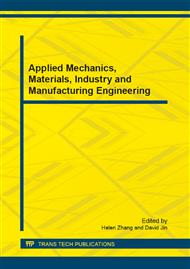p.478
p.482
p.487
p.492
p.497
p.501
p.506
p.511
p.517
Enhancing Biological Nutrient Removal from Real Domestic Wastewater by Using Iron Shavings
Abstract:
Feasibility of enhancing nutrient removal in municipal sewage plant by using iron shavings in conventional biological treatment reactor was evaluated. Results of 209-days bench-scale test indicate that this method is feasible in practice. Compared to control test, TN and TP removal was increased 8.72 % and 57.83 %, respectively,by adding 400 g iron shavings in 75 L biological reactor. Effluent TP concentration could attain level 1A (0.5 mg L-1) of China's urban sewage treatment plants discharge standards; Total iron concentration in effluent was 0.249 mg L-1 and iron consumption rate was 762.7 mg d-1 during stable period. The enhancing effect of iron shaving on nutrient removal is easy to achieve and low-cost. It is worth investigating in a deep-going way.
Info:
Periodical:
Pages:
517-520
Citation:
Online since:
April 2012
Authors:
Price:
Сopyright:
© 2012 Trans Tech Publications Ltd. All Rights Reserved
Share:
Citation:


